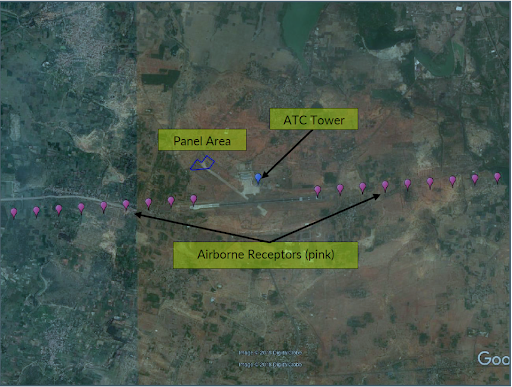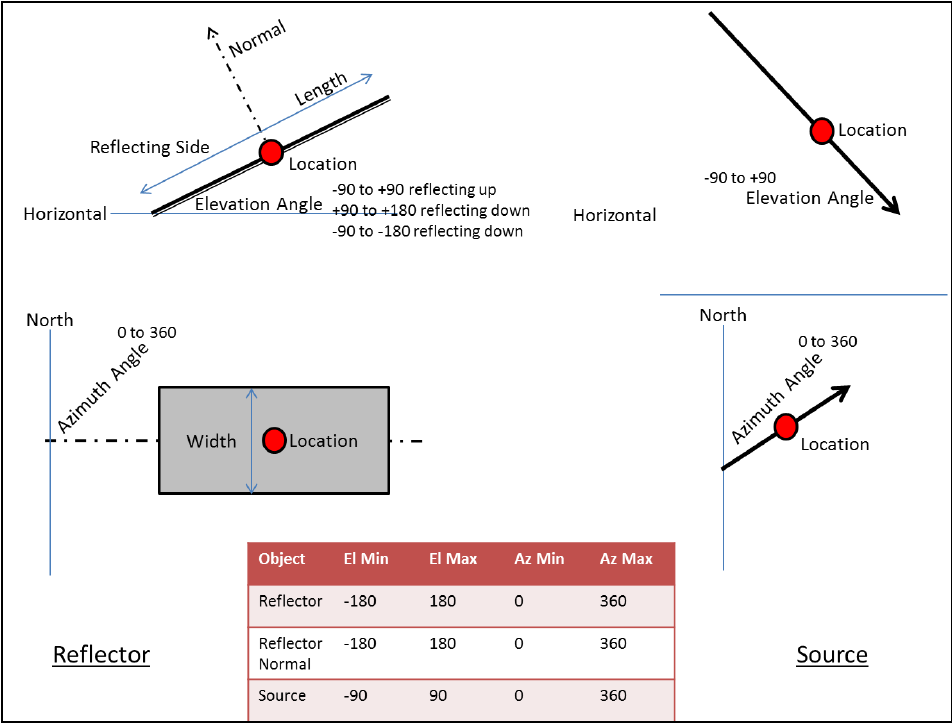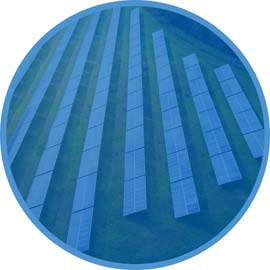Introduction
In 2018, Marigold Steel & Power India commissioned Pager Power Ltd to investigate and assess the possible effects of glint and glare from a proposed solar photovoltaic (PV) development located at Madurai Airport, India. The development is known as Madurai Airport.
Being India’s 32nd busiest terminal Madurai Airport wanted to expand on its existing solar offering – bringing the total solar capacity for the airport to 900KW.
Madurai Airport is shown in Figure 1.
Background
Glint and glare is a key issue for aviation safety across the world. If a solar installation is to be located in the vicinity of an aerodrome then a glint and glare assessment is likely to be requested.
Pager Power’s methodology is to assess whether a solar reflection can be experienced on the final two miles of the approach paths for the associated runways.
Madurai Airport has an Air Traffic Control (ATC) Tower. This is located approximately 1km southeast of the proposed development. The Airport has one asphalt runway (two runway approaches).
Figure 2 shows the receptor points for approaching aircraft and the ATC tower.
The subsequent assessment was based on desk based data collection.
The Challenge
This assessment was relatively straight forward because the airport has one single physical runway and a single visual control room. The assessment was slightly complicated by the fact that the proposed solar panels were on the airport itself.
The Process
In the first instance, Pager Power identified all aviation receptors associated with the Airport. This included assessment of the runway (2 approach paths) and ATC Tower.
The assessment involved predicting when direct solar reflections could occur towards pilots and staff in the Visual Control Room. For airborne receptors it was also necessary to calculate the intensity of direct solar reflections towards pilots.
The Solution
In this case it was found that there would be no reflections towards the VCR and some reflections towards approaching aircraft. The intensity of reflections towards approaching aircraft were found to be within acceptable limits and well below the intensity of direct sunlight.
Figure 3 shows a diagram of Pager Power’s reflection calculation process.
The Result
The results of Pager Power’s Glint and Glare Assessment were accepted by the Airport Authority India (AAI) in 2019.
Upon installation of the solar panels modelled in Pager Power’s report Madurai Airport will meet 30% of its power requirement through solar energy.
References
[1] Source: Wikimedia Commons. Image
[2] Source: © 2018 Google and DigitalGlobe.
[3] Source: 2018 Pager Power Ltd

Figure 1: Madurai Airport.

Figure 2: Approach and ATC receptor locations.

Figure 3: Reflection Calculation Process Diagram.
How can we help you today?



THE SECTORS WE SERVE




